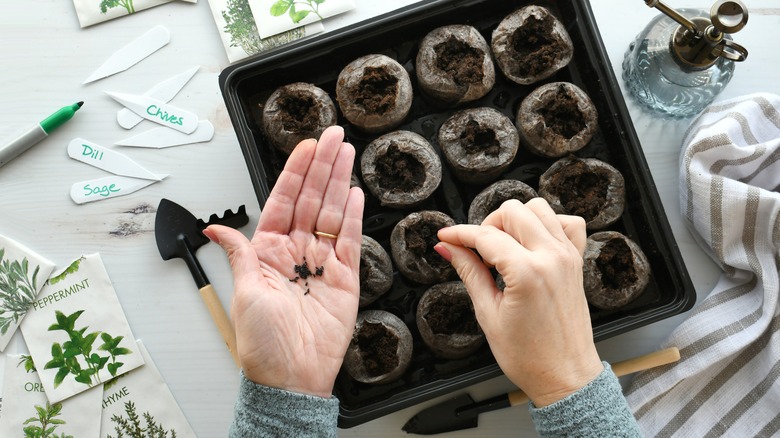Use This Sandpaper Gardening Hack To Speed Up Seed Germination Time
Time rarely moves slower than when you're waiting for seeds to germinate. While some seeds seem to burst from the soil almost instantly, others take so long you may even give up on them. For these slow-to-germinate seeds, there are a variety of strategies that can be employed to speed up the process. One of the best options is called scarification and can easily be accomplished with sandpaper or a nail file.
Seeds have many strategies for ensuring they germinate at the right time. Extremely hard outer coats are one such strategy. The seed remains dormant until the coat is damaged enough to let in water and gasses and then the seed finally begins germination. In nature, these hard outer coats can be damaged or cracked by experiencing temperature extremes or being eaten and excreted by animals.
While commercial growers sometimes use powerful acids to scarify seeds, a more practical option for most home growers is to use sandpaper or a nail file to scratch the seed's protective coat enough that water can reach the plant embryo inside and trigger germination. It's worth noting that despite the similarities in name, seed scarification is not the same as scarification for your lawn, which refers to the process of removing or breaking up excess organic matter and compacted soil on lawns.
How to scarify seeds with sandpaper
Not all seeds benefit from scarification, and some delicate seeds can be easily destroyed by the process, but flowers like nasturtiums and morning glories, as well as plants including redbuds and camellias, have seeds that germinate significantly better with scarification. To scarify the seeds, simply get some 60 or 100 grit sandpaper. then rub the seeds between sheets of the sandpaper until the seeds look dull. Another option for scarifying seeds at home is to carefully nick the seeds with a nail clipper. This hack can work well, but if you're not careful, you can easily cut too much and destroy your precious seeds. There is less risk of this if you opt for sandpaper instead.
Once you've scarified your seeds, be sure to plant them immediately as the seeds are unlikely to store well now that their outer coats have been damaged. Remember that not all difficult-to-germinate seeds benefit from scarification though. Some instead require seed stratification, which is when the seed is exposed to cold temperatures. Some seeds like those of the redbud even require both scarification and stratification to germinate well.
